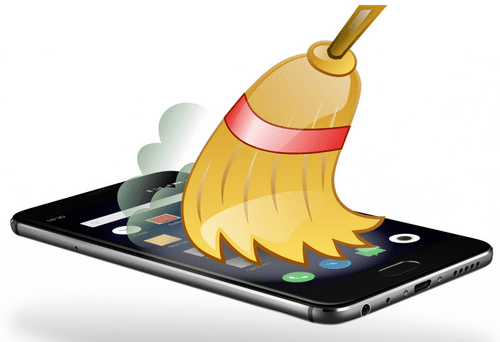If your phone is experiencing longer app launch times, delays when switching between tasks, or sluggish web browsing, it could be due to an abundance of unnecessary files, apps, and data that are slowing it down. You can improve performance, extend battery life, and free up space by decluttering your Android phone.
This comprehensive guide will walk you through the essential steps to clean your Android phone and boost its speed. From organizing storage to managing apps and settings, we’ll cover a range of simple actions that can noticeably enhance your device’s performance, restoring its speed and efficiency.

Cleaning Your Smartphone
#1 Keep Your Phone Updated
Regularly checking for system updates and ensuring that your Android device is using the latest version of its operating system is crucial. Firmware updates not only bring new features but also include bug fixes, security patches, and performance enhancements that can optimize your device. You can find the option to check for updates in your Settings app, specifically under “System” or “About Phone.”
#2 Get Rid of Bloatware
Your phone, regardless of its version, already has unnecessary pre-loaded content. Additionally, if you’ve had your phone for some time, chances are you’ve downloaded apps that are no longer useful. To optimize your phone’s performance, it’s advisable to remove these apps. Follow these steps:
- Open Settings.
- Navigate to Apps and Notifications.
- Select See All Apps.
- Uninstall any apps that you don’t need.
#3 Smart Cleaning
There is a special app cleaner that can automatically find junk data and delete it. This includes duplicate files, temporary data, some downloads, etc. The software cleaning approach does not ensure that all garbage is removed from the device, but CleanUp Cleaner does not affect personal files. If you download CleanUp Phone Cleaner, you can speed up your smartphone. When your device is low on memory, the device starts to work slowly. You will be able to feel the increase in speed after cleaning.
#4 Check Your Permissions
Your phone’s location is not the only thing that apps have access to; they can also access your camera and microphone. You can review and modify these permissions as desired:
- Open Settings.
- Go to Apps.
- Select the app you wish to modify.
- Choose Permissions.
- Decide whether to Allow or Don’t allow access.
#5 Clear Browser’s Cache
To maintain optimal speed and enhance preferences, web browsers store cookies and cache. However, these can become bloated over time. To clear your browser’s cache and cookies, open the browser and navigate to the settings screen. In Chrome, you can go to Settings > Privacy and Security > Clear browsing data.
#6 Clean up Your Contacts
It’s a good idea to tidy up your contact list, especially if you haven’t done so before. You should perform this task twice: once on your phone, accessing the contact list directly, and another time through your Google account, which acts as a backup for your contacts. To delete contacts on your phone, follow these steps:
Open the Contacts app on your Android phone or tablet.
Choose one of the following options:
For a single contact: Tap on the contact, then tap More at the top right, and select Delete. Confirm the deletion by tapping Delete.
For multiple contacts: Touch and hold one contact, then tap on the other contacts you want to delete. Tap Delete, then confirm the deletion by tapping Delete.
For all contacts: Tap More at the top right, select Select All, then tap Delete. Confirm the deletion by tapping Delete.
The contacts you delete will be moved to your Trash.
After 30 days in your Trash, the contacts will be permanently deleted.
#7 Managing Downloads
Regularly go through your Downloads folder and delete unnecessary files to free up storage space on your device. Additionally, you can consider storing essential files in cloud storage services such as Google Drive or Dropbox to save even more space.
#8 Remove Old Text Messages
To delete messages on an iPhone, open the messaging app and swipe left on the conversation. Then press the red trash icon. On a smartphone running Google Android, open the Messaging app and tap the conversation you want to delete messages from. Now, press the Menu button in the top right corner and select Delete.
#9 Remove Unnecessary Photos

To delete photos on an iPhone, open the Photos app, select “Recents”, tap the photos you wish to delete, and press the Trash Can icon located in the bottom right-hand corner. The recently deleted photos will be moved to a folder called “Recently Deleted”. You can free up more space by deleting photos from this folder, using the same process. Remember, deleting photos from “Recently Deleted” permanently removes them.
On an Android device, the latest operating system uses the Photos app. However, earlier versions of the Gallery app can follow the same steps. Open the Photo or Gallery app, press “Select” from the top right-hand corner, tap the photos you want to delete and press the Trash Can icon at the top of the screen to delete them.
Conclusion
You can easily track the relationship between the amount of memory used and performance, even visually. As soon as there is little memory left on the device, it starts to work slower. When you free up space, good performance returns. Any user who values the performance of their smartphone should take care of its memory. This can be called an axiom or a fact that we either accept or live with the slow device further.

